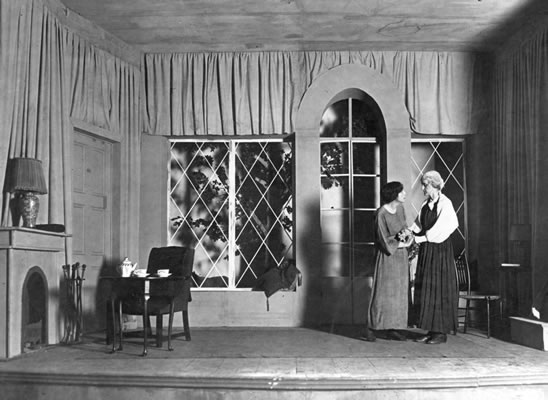Literature of the 19th century witnessed the emergence
of feminist perspectives within the realm of literature, theatre and drama.
Among a few, it is believed that the most two prominent literature figures were
Kate Chopin and Fanny Fern, whose works vastly integrated with the inequality
of the sexes and women dependency on men in their lives, subsequently fashion
the way for female writers of the twentieth century. The most prominent aspect
of Susan Glaspell’s involvement in literature during this time was that she
ornately inherited these identical abstract of Chopin and Fern’s notion of
philosophies; women rights, their role in a society and their struggle to be
heard.
Susan
Keating Glaspell was born in Davenport, Iowa in 1882. The inception of her
writing career was soon after she graduated from Drake University, where she
became a journalist of the Des Moines Daly News. Glaspell gave up newspaper
when her stories were published in female oriented magazines such as Harper’s
and The Ladies’ Home Journal. She then met her husband, George Cook in 1915 and
together they founded the Provincetown Players on Cape Cod, Massachusetts that
deemed as a venue for American plays that were too experimental and
controversial for Broadway during the time.
Her
contribution in theatre and drama was celebrated momentously as she was awarded
with American Pulitzer Prize Winning Playwright. Aside from being a playwright,
Glasspel’s involvement was remarkably seen as an actress, director, novelist,
biographer and journalist. Glasspel’s works mostly curated with firm feminist
idea; dealing with women expected or forced roles in society as well as the
relationships between men and women. Her award winning work Allison’s House, a play based on the
life and family of Emily Dickinson and some other works such as Women's Honor (1918), Bernice (1919), Inheritors (1921), and The
Verge (1922) were crafted with the significant notion of feminism and their
struggle.
Trifles
‘A Jury of Her Peers’ (1917) were written originally as a play
entitled Trifles; a work inspired by
a murder that Glaspell reported when she was working as a journalist for the
Des Moines Daily News. Trifles peculiarly
explored the absence of respect and appreciation from men towards women during
the time by vividly highlighting alleged roles of men in the society. The plot
was constructed with a murder investigation; in a house which setting seemingly
utilized the space of a kitchen of Mr. Wright’s, the victim that was murdered.
The prominent thematic exploration of the drama took place when a sheriff and
the county attorney arrived at the crime scene to fetch evidences due to the
arrest of the Mr. Wright’s wife, Minnie who is deemed to be one of the
suspects.
During
the investigation there were Mrs. Hale, the sheriff’s wife and Mrs. Peter who
happened to be the Wright’s neighbor. The central facet of the drama took place
in the kitchen where both of the women sat while the men executing their role
as the key figure of the society, investigating a murder case while the women
sit and observing the kitchen. The women then discover the motive by paying
close attention to ‘women’s trifles’ where theme of the story is revealed. The
engagements of men in the Trifles lucidly
criticize women concerns which often considered to be mere trifles, unimportant
issues that bear little or no importance to the true work of society which
being carrried out by men. Glaspell witty approaches throughout Trifles call the viewer to comprehend
the relativity of men’s and women’s perspectives and work by curating a
tension-filled drama that unfolds what been ignored and silenced; the society
devaluation of women roles.
